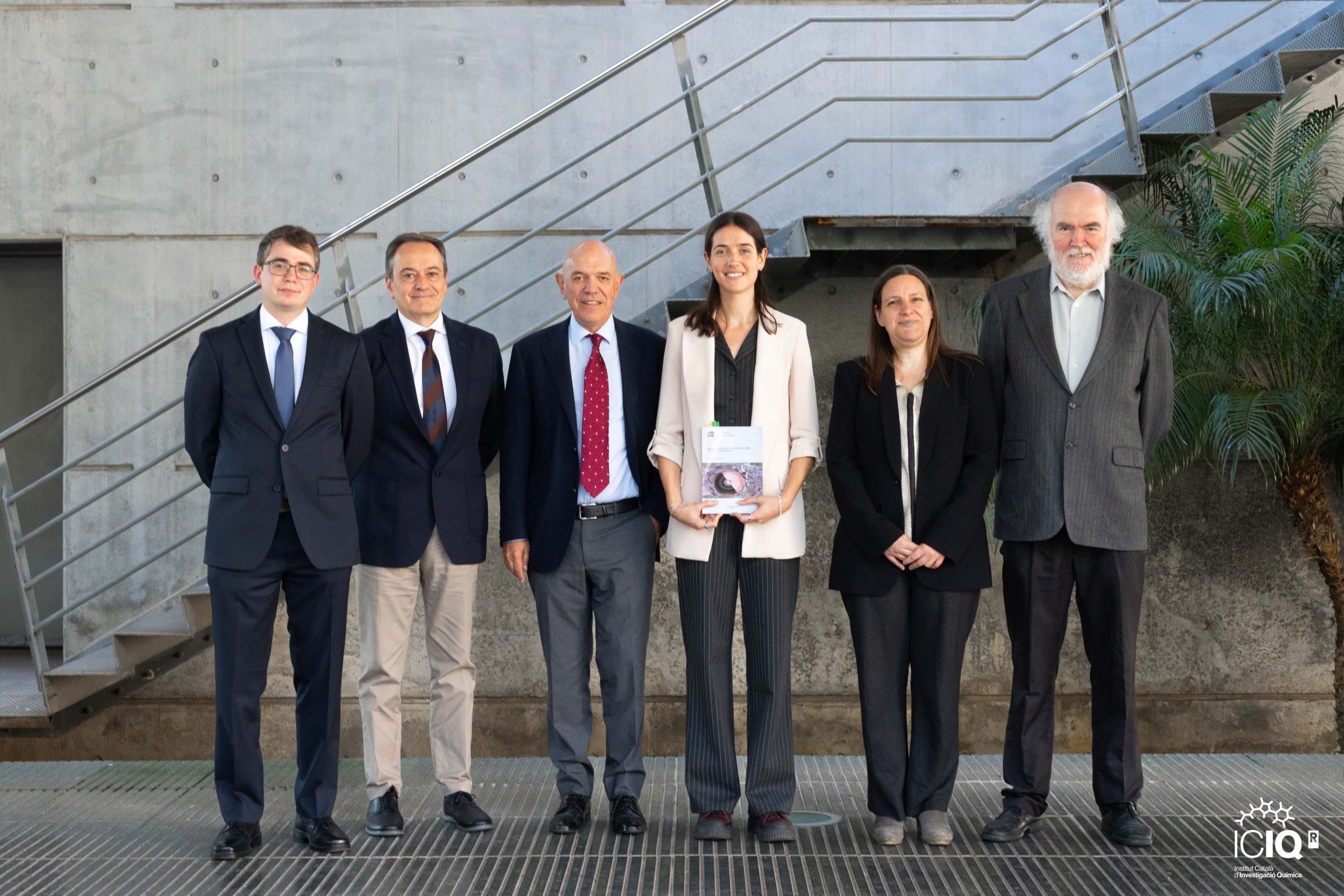New Doctor at ICIQ!
Laura Rovira González, PhD student under the supervision of Prof. Anton Vidal, has defended her PhD Thesis entitled ‘Design and Application of Bisphosphite Ligands with a Distal Regulation Site for Asymmetric Catalysis’ (assigned to the Organic and Analytical Chemistry Department of the Universitat Rovira i Virgili) publicly on June 17th at the ICIQ auditorium.
The members of the evaluation committee were: Prof. Asunción Barbero (Universidad de Valladolid), Prof. José Ramón Galán-Mascarós (ICIQ) and Prof. Ana C. Cuñat (Universitat de València).

Dr. Rovira González with her supervisor, Prof. Anton Vidal, and the evaluation committee
Abstract:
The design and synthesis of enantiopure supramolecular bisphosphite ligands, together with their coordination properties with rhodium and palladium precursors, have been studied. Rhodium and palladium complexes derived from these supramolecular ligands have been applied as catalysts in asymmetric hydroformylations and allylic substitutions. The designed ligands contain a polyoxyethylene motif, which is the responsible for regulation through supramolecular interactions with the regulation agents, and two phosphite groups derived from enantiomerically pure diol derivatives that bind the metal center and constitute the catalytic site. The supramolecular strategy that has been followed within the present Doctoral Thesis relies on the interaction between a number of regulation agents (alkali metal, alkaline earth metal or lanthanide salts) and the polyoxyethylene motif of the ligand, which serves for the fine modification of the geometry and flexibility of the catalytic center (adaptive effect of the asymmetric catalyst). This supramolecular regulation strategy has led to high enantioselectivities in hydroformylation reactions of heterocyclic olefins and has allowed the regulation of the regioselectivity in the hydroformylation of several cyclic olefins. Furthermore, the formation of byproducts associated with the hydroformylation process has also been suppressed with the use of the above mentioned regulation agents. Supramolecularly regulated bisphosphite ligands have also been applied to asymmetric allylic substitution reactions. Noteworthy regulation effects have been achieved in this transformation, though the enantioselectivies in the allylic substitutions remained moderate.
Related news

Let's create a brighter future
Join our team to work with renowned researchers, tackle groundbreaking
projects and contribute to meaningful scientific advancements






 20-12-2024
20-12-2024 


















